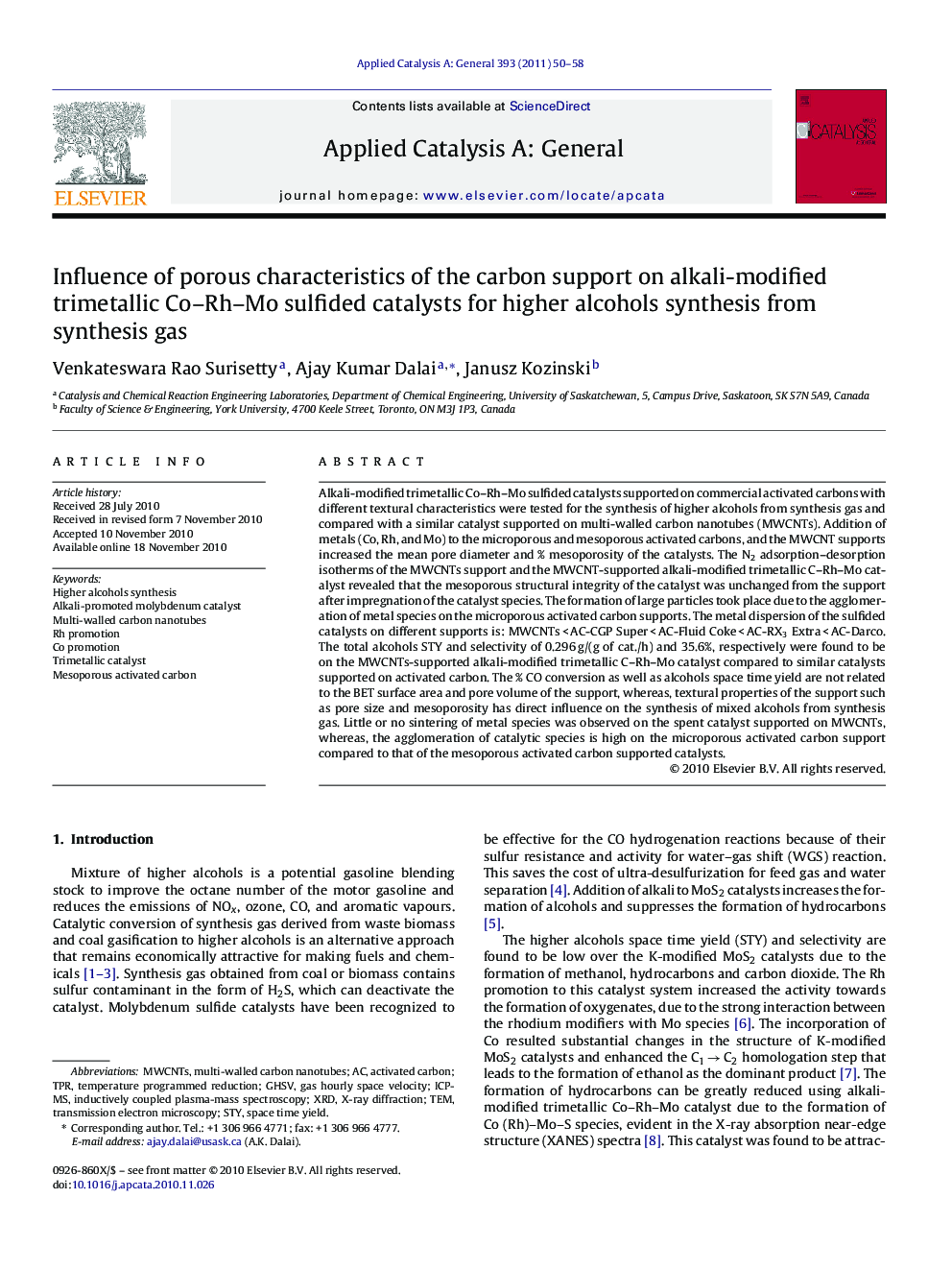| Article ID | Journal | Published Year | Pages | File Type |
|---|---|---|---|---|
| 41741 | Applied Catalysis A: General | 2011 | 9 Pages |
Alkali-modified trimetallic Co–Rh–Mo sulfided catalysts supported on commercial activated carbons with different textural characteristics were tested for the synthesis of higher alcohols from synthesis gas and compared with a similar catalyst supported on multi-walled carbon nanotubes (MWCNTs). Addition of metals (Co, Rh, and Mo) to the microporous and mesoporous activated carbons, and the MWCNT supports increased the mean pore diameter and % mesoporosity of the catalysts. The N2 adsorption–desorption isotherms of the MWCNTs support and the MWCNT-supported alkali-modified trimetallic C–Rh–Mo catalyst revealed that the mesoporous structural integrity of the catalyst was unchanged from the support after impregnation of the catalyst species. The formation of large particles took place due to the agglomeration of metal species on the microporous activated carbon supports. The metal dispersion of the sulfided catalysts on different supports is: MWCNTs < AC-CGP Super < AC-Fluid Coke < AC-RX3 Extra < AC-Darco. The total alcohols STY and selectivity of 0.296 g/(g of cat./h) and 35.6%, respectively were found to be on the MWCNTs-supported alkali-modified trimetallic C–Rh–Mo catalyst compared to similar catalysts supported on activated carbon. The % CO conversion as well as alcohols space time yield are not related to the BET surface area and pore volume of the support, whereas, textural properties of the support such as pore size and mesoporosity has direct influence on the synthesis of mixed alcohols from synthesis gas. Little or no sintering of metal species was observed on the spent catalyst supported on MWCNTs, whereas, the agglomeration of catalytic species is high on the microporous activated carbon support compared to that of the mesoporous activated carbon supported catalysts.
Graphical abstractFigure optionsDownload full-size imageDownload high-quality image (76 K)Download as PowerPoint slideResearch highlights▶ The blocking extent was high on the microporous activated carbon supported catalysts. ▶ Dispersion of metal species is higher on the surface of mesoporous activated carbon. ▶ The pore size of the support has direct influence on higher alcohols synthesis.
